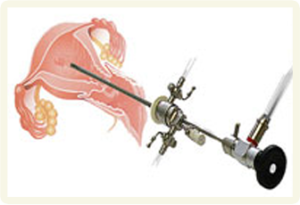
Hysteroscopy
- Hysteroscopy
- Diagnostic Hysteroscopy
- Hysteroscopic Adhesiolysis
- Hysteroscopic Tubal Cannulation
- Hysteroscopic Septal Resection
- Hysteroscopic Myomectomy
- Hysteroscopic Polypectomy
When is hysteroscopy done ?
Hysteroscopy may be recommended for evaluation for abnormal uterine bleeding, recurrent pregnancy loss, or recurrent abortions are also evaluated by hysteroscopy abnormal findings on a hysterosalpingogram, ultrasound, or pelvic exam may also require a hysteroscopy for further evaluation. Uterine fibroids, polyps and septums [divisions] are evaluated as well as treated hysteroscopically.
What is Diagnostic Hysteroscopy ?
Diagnostic hysteroscopy can be performed with a smaller instrument. This procedure is generally shorter and can be done under mild sedation or short general anaesthesia for better comfort The procedure is quick and inexpensive.
What is Operative Hysteroscopy ?
Operative hysteroscopy is performed under general anaesthesia. This will allow the physician to both diagnose and treat most findings, which are encountered at the time of the procedure. The Operative Hysteroscope has ports, which allow the physician to insert operating tools, such as, scissors, cautery devices or a laser fiber. These may be used to resect or cauterize specific abnormalities under direct visualization.
The hysteroscope is also valuable in treating some forms of tubal occlusion. Many patients with a blockage in the fallopian tube may have an obstruction at the junction between the uterus and fallopian tube. The Hysteroscope is used to pass a small catheter through this contracted area under direct visualization. Occasionally, scar tissue can be disrupted and allow passage of sperm as the result of the procedure. A physician will be able to evaluate the cervical canal, the contour of the uterus, and the quality of the endometrial lining. The tubal ostia are the openings of the fallopian tube into the uterine cavity. They should be easily seen with the hysteroscope.